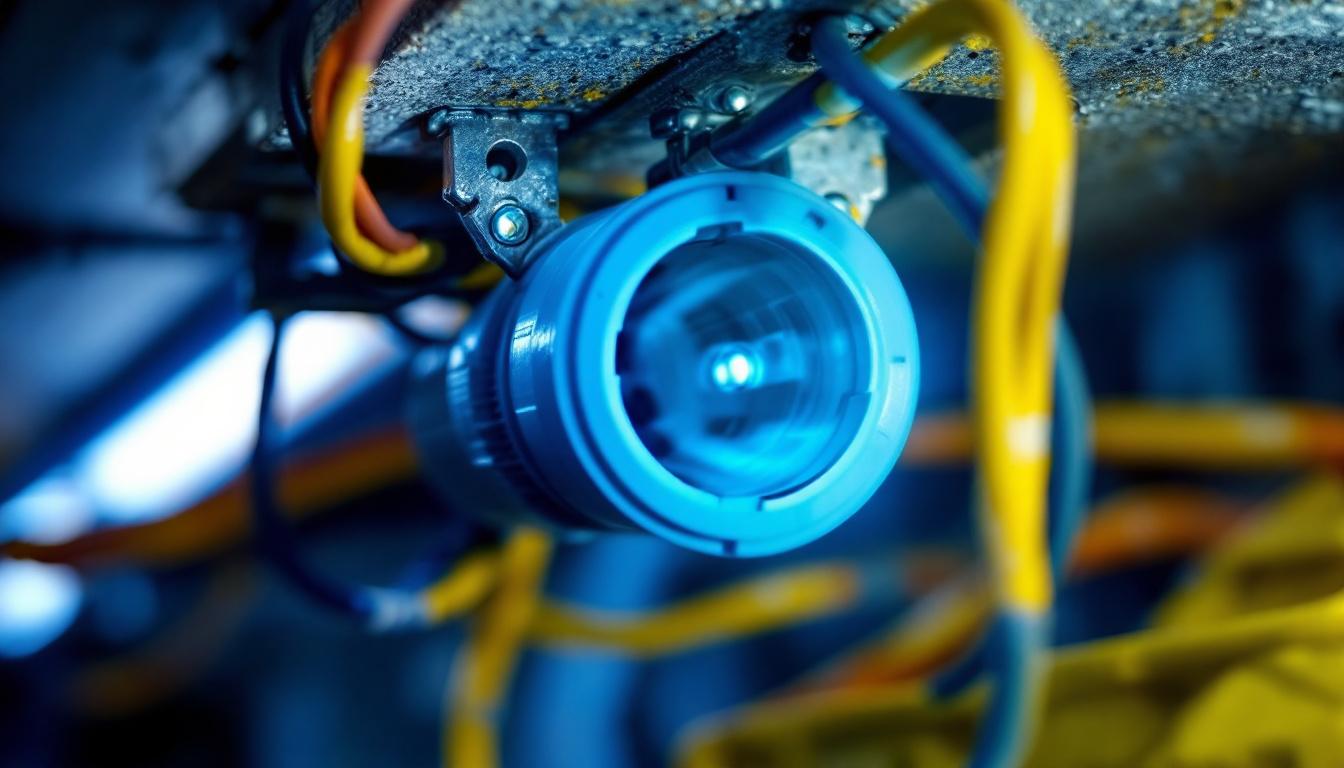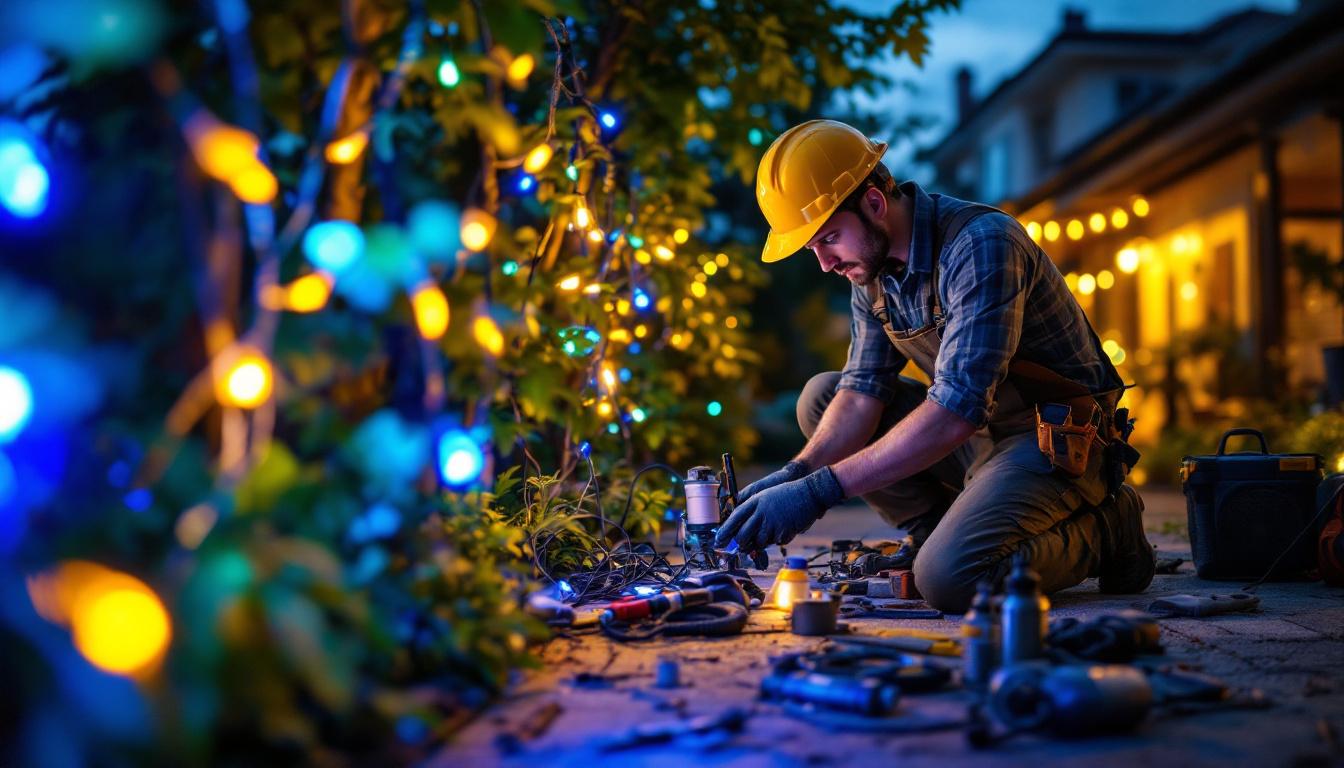
Fluorescent light fixtures have been a staple in commercial and industrial lighting for decades. They are known for their energy efficiency and longevity compared to traditional incandescent bulbs. However, as technology advances and LED options become increasingly popular, many lighting contractors find themselves needing to replace outdated fluorescent fixtures.
Replacing fluorescent light fixtures not only enhances the aesthetic appeal of a space but also improves energy efficiency and reduces maintenance costs. For lighting contractors, understanding the nuances of this process is crucial to providing quality service and meeting client expectations.
Fluorescent light fixtures consist of several key components, including the ballast, bulbs, and the fixture housing itself. The ballast regulates the current to the bulbs, ensuring they operate efficiently. When replacing a fixture, it is essential to assess these components, as faulty ballasts or damaged bulbs can lead to inadequate lighting and increased energy consumption.
Additionally, the fixture housing plays a significant role in the overall performance of the lighting system. A well-designed housing can enhance light distribution, reduce glare, and improve the fixture’s lifespan. Understanding these components allows lighting contractors to make informed decisions when recommending replacements to clients. Furthermore, it is important to consider the type of fluorescent bulbs being used, as they can vary in color temperature and lumen output, affecting the overall atmosphere of the environment.
The benefits of replacing fluorescent fixtures extend beyond mere aesthetics. One of the most significant advantages is energy efficiency. Newer lighting technologies, such as LED, consume significantly less energy, leading to lower utility bills for clients.
Moreover, modern fixtures often come with improved lighting quality, offering better color rendering and brightness. This can enhance the overall ambiance of a space, making it more inviting and functional. For lighting contractors, emphasizing these benefits can help secure client buy-in and justify the investment in new fixtures. Additionally, the reduced heat output of LED fixtures can contribute to lower cooling costs in warmer climates, further enhancing the financial appeal of upgrading. As businesses strive for sustainability, the transition to energy-efficient lighting solutions aligns with broader environmental goals, making it a win-win for both contractors and clients.
Before proceeding with a replacement, it is essential to assess the current lighting situation. This involves evaluating the existing fixtures, their performance, and the specific needs of the space. Lighting contractors should consider factors such as the age of the fixtures, the frequency of maintenance, and any issues with flickering or dimming. Additionally, they should take into account the type of bulbs currently in use, as different technologies offer varying levels of efficiency and light quality.
Additionally, understanding the client’s needs is crucial. Different environments may require different lighting solutions, and a one-size-fits-all approach may not yield the best results. By conducting a thorough assessment, lighting contractors can tailor their recommendations to meet the unique requirements of each project. For instance, a retail space may benefit from brighter, more focused lighting to highlight products, while an office environment may require softer, more diffused light to create a comfortable working atmosphere.
Several signs indicate that fluorescent light fixtures may need replacement. Frequent flickering, dimming, or buzzing sounds can signify that the ballast is failing or that the bulbs are nearing the end of their lifespan. Moreover, physical damage to the fixture housing, such as cracks or corrosion, can compromise the fixture’s integrity and performance. It’s important for contractors to conduct visual inspections and listen for unusual sounds, as these can be early indicators of larger issues.
Lighting contractors should also consider the age of the fixtures. If they are several years old, it may be more cost-effective to replace them with newer, more efficient models rather than continue investing in repairs. Additionally, older fixtures may not meet current safety standards or energy efficiency regulations, which could lead to compliance issues down the line. By recognizing these signs, contractors can provide proactive solutions to their clients, ensuring that they are not only improving aesthetics but also enhancing safety and efficiency.
Energy efficiency is a critical factor when assessing the need for replacement. Older fluorescent fixtures often consume more energy than their modern counterparts. By evaluating the energy consumption of existing fixtures, lighting contractors can demonstrate potential savings to clients. This evaluation should include calculations of wattage, operating hours, and the overall energy costs associated with the lighting system.
Utilizing tools such as energy audits can provide valuable insights into the efficiency of a lighting system. By presenting clients with data on energy savings and return on investment, contractors can make a compelling case for replacing outdated fixtures. Furthermore, they can introduce clients to advanced lighting technologies, such as LED fixtures, which not only consume less power but also have longer lifespans and lower maintenance costs. This shift not only benefits the client’s bottom line but also contributes to a more sustainable environment, aligning with the growing trend towards eco-conscious business practices.
Once the need for replacement has been established, the next step is selecting the appropriate fixture. The market offers a variety of options, including LED retrofits, new fluorescent fixtures, and other advanced lighting technologies. Each option comes with its advantages and considerations.
Lighting contractors must consider factors such as the specific application, desired light quality, and budget constraints when making recommendations. Understanding the differences between various types of fixtures can help contractors guide their clients toward the best choice for their needs.
When it comes to replacing fluorescent fixtures, LED options are often the most popular choice. LEDs offer several advantages, including longer lifespans, lower energy consumption, and reduced heat output. However, some clients may prefer to stick with fluorescent technology due to familiarity or budget constraints.
Lighting contractors should educate clients on the benefits of LEDs while also considering their preferences and financial limitations. Providing a side-by-side comparison of costs, energy savings, and maintenance requirements can help clients make informed decisions.
Each lighting fixture comes with specific specifications that dictate its performance. These include wattage, lumen output, color temperature, and beam angle. Understanding these specifications is vital for lighting contractors to ensure that the replacement fixture meets the client’s lighting needs.
For instance, a higher lumen output may be necessary for spaces requiring bright, focused lighting, such as warehouses or retail environments. Conversely, softer lighting may be more suitable for offices or residential areas. By aligning fixture specifications with the intended use of the space, contractors can enhance both functionality and aesthetics.
Replacing a fluorescent light fixture involves several steps, each requiring careful attention to detail. Following a systematic approach can ensure a successful installation and minimize potential issues.
Before beginning the replacement process, it is crucial to take safety precautions. This includes turning off the power to the fixture at the circuit breaker and using appropriate personal protective equipment. Ensuring a safe working environment is paramount for both the contractor and the occupants of the space.
Additionally, gathering all necessary tools and materials beforehand can streamline the process. Having everything on hand reduces downtime and allows for a more efficient installation.
The first step in the actual replacement process is removing the old fixture. This typically involves disconnecting the ballast and bulbs, followed by detaching the fixture from its mounting. Care should be taken to handle all components gently to avoid damage.
Once the old fixture is removed, it is essential to inspect the mounting surface for any damage or wear. Repairing or replacing any compromised areas can help ensure the new fixture is securely installed and functions optimally.
With the old fixture removed, the next step is installing the new one. This involves securing the new fixture to the mounting surface, connecting the wiring, and ensuring that all components are properly aligned. Following the manufacturer’s instructions is crucial to avoid any installation errors.
After the new fixture is installed, it is important to test it before finalizing the installation. Turning the power back on and checking for proper operation ensures that everything is functioning as intended. If any issues arise, troubleshooting should be conducted to identify and resolve them promptly.
Once the new fixture is installed and functioning correctly, there are several post-installation considerations to keep in mind. These include ensuring that clients are satisfied with the new lighting and providing guidance on maintenance and care.
Educating clients about their new lighting system is essential for long-term satisfaction. Providing information on how to operate the fixtures, including any dimming or control features, can enhance the user experience. Additionally, discussing maintenance schedules and best practices can help prolong the lifespan of the fixtures.
Soliciting feedback from clients after the installation can also provide valuable insights. Understanding their experiences and addressing any concerns can foster positive relationships and encourage repeat business.
As technology continues to evolve, lighting contractors should consider future-proofing their installations. This may involve recommending fixtures that are compatible with smart lighting systems or that can easily accommodate upgrades in the future.
By staying informed about emerging trends and technologies, contractors can position themselves as knowledgeable professionals who provide clients with solutions that meet their current and future needs.
Replacing fluorescent light fixtures is an essential task for lighting contractors, offering numerous benefits to clients and enhancing the overall quality of lighting in various spaces. By understanding the components of fluorescent fixtures, assessing the need for replacement, and selecting the right fixtures, contractors can provide valuable services that meet client expectations.
The replacement process, when approached systematically and safely, can lead to successful installations and satisfied clients. By focusing on education and future-proofing strategies, lighting contractors can establish themselves as trusted experts in the industry, paving the way for continued success and growth.
Ready to elevate your lighting projects and exceed client expectations? Look no further than LumenWholesale for all your lighting needs. Our extensive selection of spec-grade lighting products combines quality and affordability to fit every project’s requirements. Say goodbye to local distributor markups and hello to unbeatable wholesale prices, with the added convenience of free shipping on bulk orders. Don’t compromise on performance or cost. Visit LumenWholesale today and discover the best value in wholesale lighting.

Discover why Lred Tube is revolutionizing the lighting industry and becoming essential for contractors.

Explore innovative strategies used by smart lighting contractors to retrofit spaces with energy-efficient solutions.

Discover the frequent pitfalls lighting contractors face with fluorescent lamp sockets.

Discover the transformative power of LED lights for outdoor spaces in this comprehensive guide tailored for lighting contractors.